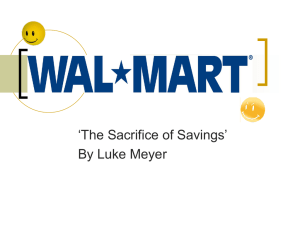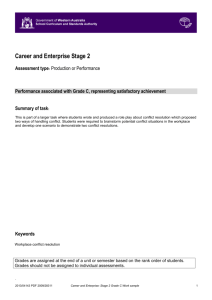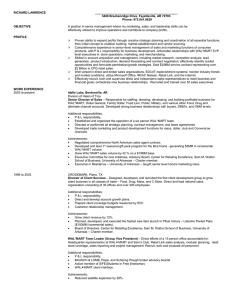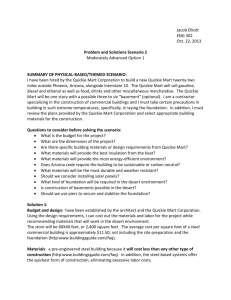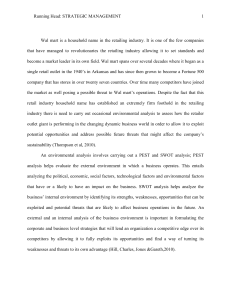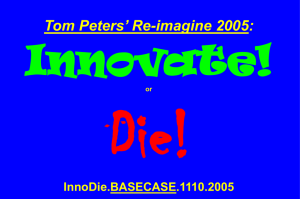Team Fishbowl
advertisement
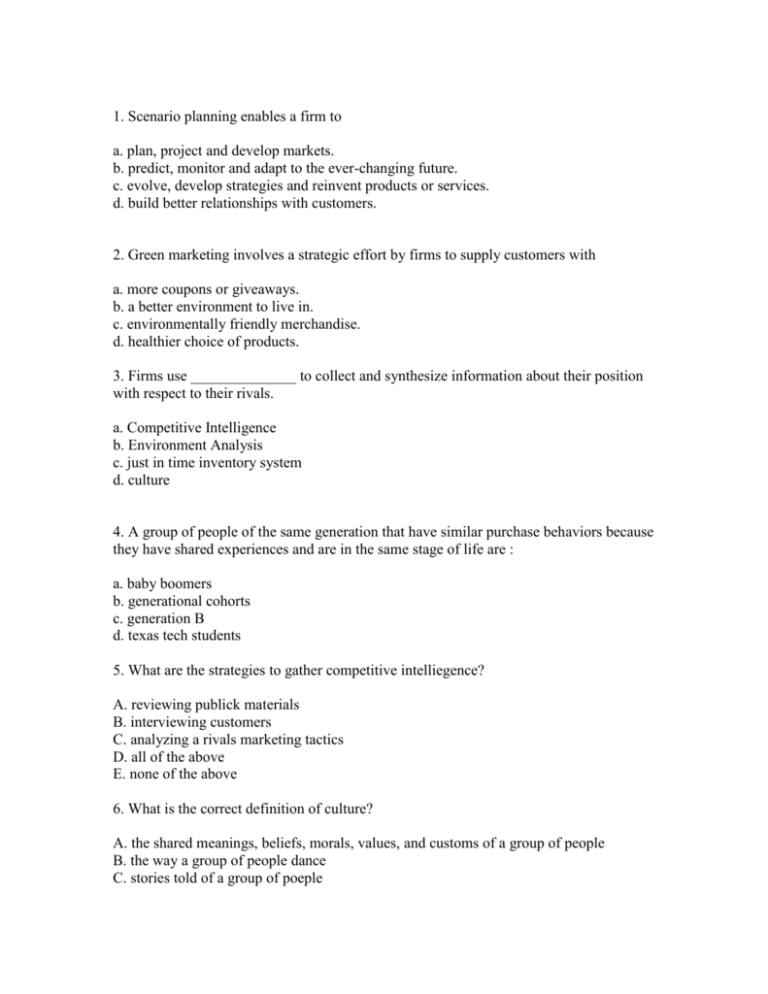
1. Scenario planning enables a firm to a. plan, project and develop markets. b. predict, monitor and adapt to the ever-changing future. c. evolve, develop strategies and reinvent products or services. d. build better relationships with customers. 2. Green marketing involves a strategic effort by firms to supply customers with a. more coupons or giveaways. b. a better environment to live in. c. environmentally friendly merchandise. d. healthier choice of products. 3. Firms use ______________ to collect and synthesize information about their position with respect to their rivals. a. Competitive Intelligence b. Environment Analysis c. just in time inventory system d. culture 4. A group of people of the same generation that have similar purchase behaviors because they have shared experiences and are in the same stage of life are : a. baby boomers b. generational cohorts c. generation B d. texas tech students 5. What are the strategies to gather competitive intelliegence? A. reviewing publick materials B. interviewing customers C. analyzing a rivals marketing tactics D. all of the above E. none of the above 6. What is the correct definition of culture? A. the shared meanings, beliefs, morals, values, and customs of a group of people B. the way a group of people dance C. stories told of a group of poeple D. reputation 7. What is the correct name for CDSTEP? A. communication, discussion, statements, type, electronic, personal B. culture, demographics, social issues, technolgical advances, economic sitation, political environment C. culture, denomination, social status, technology, economics, personal values D. B &C 8. What is a type of generational cohorts? A. old poeple B. young professionals C. Generation X D. Generation NOW 9. What is the fifth step in the scenario planning process? a.) identify different scenarios b.) assess the profitability of each scenario c.) assess strengths and weaknesses d.) assess opportunities and threats 10. Which one of these is not one of the factors affecting the marketing environment? a. company’s corporate partners b. company’s capabilities c. competitors d. company’s finance statements e. competitive intelligence 11. What is the second step of the scenario planning process? a. Assess strengths and weaknesses b. Apply the marketing mix to the different scenarios c. Assess opportunities and threats d. Identify different scenarios 12. The ____________ is the center of all marketing efforts. a. Product b. Consumer c. Competition d. Company 13. Inflation refers to the persistent increase in the prices of ___________. a. produce b. chickens c. goods and services d. none of the above 14. Interest rates represent the cost of ___________ money a. lending b. borrowing c. stealing d. none of the above 15. When was the first cell phone introduced? a. 1985 b. 1999 c. 1993 d. 1984 16. Which of the following are weaknesses for Wal Mart? a. low prices b. old people greeters c. running down small businesses d. clean ups on aisle 5 17. Which of the following are Wal Mart’s strengths? a. being the world’s largest retailer b. 138 million customers per week c. having more cheeto’s stockpiled than any other corporation d. a and b 18. According to professional studies, which level of education earns the most? a. Less than 9th graders b. Master’s degree c. professional degree d. doctorate degree 19. Generation Y is more than ________ times the size of generation X. a. 2 b. 3 c. 4 d. 5 20. What is a tween? a. Anyone who owns a Hannah Montana poster b. not quite teenagers but not young children c. Someone who is between 20 and 25 d. none of the above

